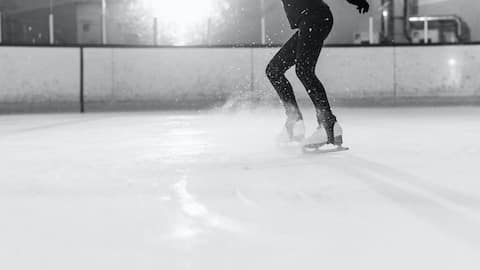Ice skating 101: Essential tips for an enjoyable glide
What's the story
Mastering the art of ice skating requires a combination of skill, balance, and confidence. With the right measures and tricks, you can easily ace ice skating. Whether you're a beginner lacing up your skates for the first time or aiming to refine your technique, these ice skating tips are tailored to help you navigate the frozen terrain with ease and joy.
Tip 1
Tie skates the right way
If your skates are not laced correctly, they won't be the right ones for you. If your skates are too tight, your feet may go numb; conversely, if they are too loose, your ankles may not receive the necessary support. If you're unsure of your size, try on a few pairs and correctly lace them up to see what fits you closely yet comfortably.
Tip 2
Layer it right
When selecting clothing on an ice rink, there are three primary things to take into account: remaining warm, having freedom of movement, and being safe. You can move without being uncomfortable or cold if you wear two or three light and warm garments. Additionally, wearing gloves will keep your hands and palms warm and shield them from any ice scratches.
Tip 3
Start off slowly
When it comes to ice skating, you should never sprint before you can walk. Before attempting any complicated moves, take your time on the ice and concentrate on becoming at ease with wearing skates. Step onto the ice and begin to march. This will also aid you in finding your balance. Try performing a push-push glide once you are at ease with marching.
Tip 4
Get the support you need
Investing in a skate assist or wearing additional guards such as a helmet, and knee or elbow pads is advised if you're new to skating. This will keep you upright on your blades and safe in the event of a fall. One of the best features of ice skating aids is that it makes it easy to get around the rink while practicing.
Tip 5
Look forward
Many novice skaters keep staring at their feet instead of moving in the desired direction. Remember to look forward and focus on your surroundings. Keeping your head up and facing forward can help you stay balanced, prevent you from colliding with anyone, and you will know where you are in case you fall. It's best to keep your knees bent and your weight forward.
